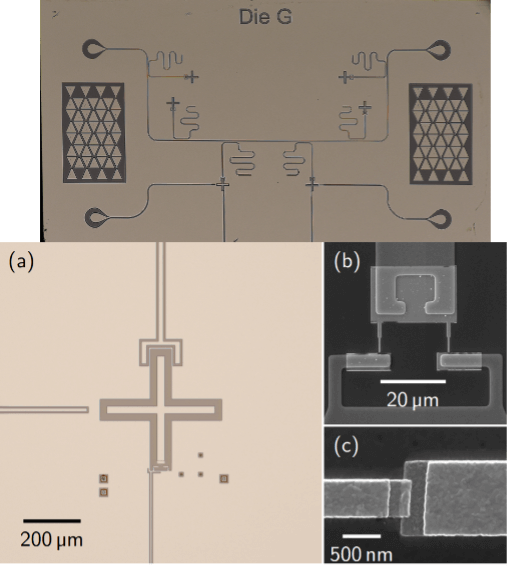Quantum neuromorphic computing (QNC) is a novel method that combines quantum computing with brain-inspired neuromorphic computing. Neuromorphic computing performs computations using a complex ensemble of artificial neurons and synapses (i.e., electrical circuits) to emulate the human brain. QNC may lead to a quantum advantage by realizing these components with quantum memory elements, or memelements, which can store and process quantum information within the same device. This research aims to achieve experimental realization of superconducting quantum memelements, which has never been done before. A quantum memcapacitor will be fabricated by depositing and patterning thin aluminum films, and then cooling to cryogenic temperatures to unveil quantum-mechanical properties in highly nonlinear regimes. The success of the device will be demonstrated by measuring a characteristic Lissajous curve with a pinched hysteresis, which is a hallmark of a memelement. A variety of memcapacitor regimes will then be investigated, including two-photon memcapacitive processes, loss and temperature effects. Finally, entanglement between two quantum memcapacitors will be shown theoretically and experimentally, paving the way toward an actual QNC. QNC will lead to new knowledge on quantum technologies by helping develop improved fabrication and quantum machine learning techniques inspired by the brain. Further, investigating the quantum mechanical properties of quantum memelements acting as artificial neurons in dissipative environments may provide further insight into the working principles of the human brain.

Figure 1. Optical images of a typical superconducting quantum device similar to the one investigated in this project.
Related Content

Molecular Scale Magnetic Resonance Imaging
Through its phenomenal ability to image soft tissues, magnetic resonance imaging (MRI) has revolutionized both clinical medicine and research biomedicine.
September 9, 2016

Quantum State Tomography with Machine Learning
Summary An important challenge in building a quantum computer is quantifying the level of control obtained in the preparation of a quantum state. The state of a quantum device is characterized from experimental measurements, using a procedure known as tomography. Exact tomography requires a vast amount of computer resources, making it prohibitive for quantum […]
June 6, 2018

Ultrafast Dynamical Studies of Valley-Based Qubits
Summary As monolayers, transition metal dichalcogenides (TMDCs) – such as tungsten diselenide (WSe2) – become direct-bandgap semiconductors capable of emitting light. Compared to conventional direct-bandgap semiconductors, such as III-V semiconductors like GaAs, excitons (quasiparticles made of an electron hole bound with an electron) and single-layer TMDCs (SL-TMDCs) have much stronger binding energy. Excitons and […]
June 29, 2018
QuantumIon: an open-access quantum computing platform
Summary Trapped ions are one of the most advanced technologies for quantum computing, offering multi-qubit control in a universal quantum computing architecture and the ability to perform calculations with unprecedented precision. In this project we construct a shared trapped-ion quantum computing platform, QuantumIon, that will enable a broader and interdisciplinary scientific community to access an […]
September 9, 2019

